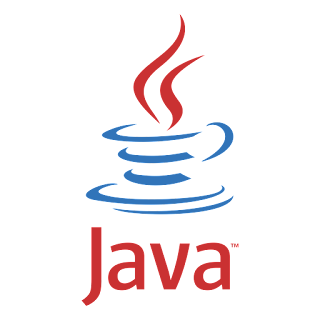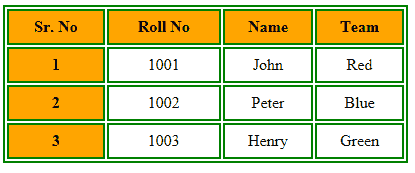Supercharge Your Backend Development Skills with Spring Boot 3: Learn Java and Discover Its Incredible Features!
Introduction:
- Understanding the importance of backend development skills
- The role of Spring Boot in modern backend development
- Overview of Java and its popularity in the programming community
- How mastering Spring Boot and Java can enhance your backend development skills
Backend development is a fundamental aspect of creating robust and efficient web applications. It involves designing and implementing the server-side components that power the application and enable seamless communication between the frontend and the database. To excel in this field, it is crucial to have a strong understanding of modern backend development frameworks and programming languages.
One such framework that has gained immense popularity in recent years is Spring Boot. Built on top of the Java programming language, Spring Boot offers a streamlined approach to developing backend applications, making it an excellent tool for both beginners and experienced developers. In this article, we will delve into the realm of Spring Boot and Java, exploring their incredible features and the significant impact they can have on your backend development skills.
Section 1: Getting Started with Spring Boot and Java
1.1 Installing Java Development Kit (JDK)
- Downloading and installing JDK on your operating system
- Setting up environment variables and configuring Java on your machine
Before diving into Spring Boot, it is essential to have Java Development Kit (JDK) installed on your system. The JDK provides the necessary tools and libraries required for Java development. To get started, you can download and install the latest version of the JDK from Oracle's official website. Once installed, you need to configure the environment variables to make Java accessible from the command line and any integrated development environment (IDE) you may choose to use.
1.2 Introduction to Spring Boot
- What is Spring Boot and its specific benefits for backend development
- Exploring the key features of Spring Boot
Spring Boot is a powerful framework designed to simplify the development of production-grade Spring applications. It provides a solid foundation for building enterprise-level backend systems while reducing the boilerplate code commonly associated with Spring. With Spring Boot, developers can focus on writing business logic rather than configuring and managing infrastructure. Some of the key benefits of Spring Boot include automatic configuration, embedded server support, and packaging capabilities.
1.3 Setting Up a Spring Boot Project
- Creating a new project with Spring Initializer
- Configuring project dependencies and build tools
To start a new Spring Boot project, you can use Spring Initializer, a web-based tool that generates a basic project structure with all the necessary dependencies and configurations. With Spring Initializer, you can select the desired dependencies, specify the build tool (such as Maven or Gradle), and generate the project skeleton. Once the project is set up, you can further configure it by adding additional dependencies and setting up build tools to streamline the development process.
Section 2: Java Fundamentals for Backend Development:
2.1 Understanding Object-Oriented Programming (OOP) in Java
- Overview of OOP principles and their significance in Java
- Exploring classes, objects, inheritance, and polymorphism in Java
Java, being an object-oriented programming language, revolves around the concept of objects and classes. Object-oriented programming (OOP) allows developers to organize code into reusable entities called classes, which encapsulate data and behavior. In Java, objects are instances of classes and can interact with each other through method invocations. Key OOP principles such as inheritance, polymorphism, and encapsulation play a significant role in designing efficient and maintainable backend applications.
2.2 Java Syntax and Control Structures
- Learning the syntax of the Java programming language
- Exploring control structures like conditionals and loops
Java syntax is known for its readability and ease of understanding. Learning the basic syntax, including variable declaration, data types, operators, and control structures, is essential to write functional and efficient Java code. Control structures such as conditionals (if-else statements) and loops (for, while) allow developers to make decisions and iterate over blocks of code based on specific conditions. Mastery of these control structures is crucial for implementing complex backend functionality.
2.3 Working with Data Structures and Collections in Java
- Understanding the various data structures available in Java
- Exploring collections such as arrays, lists, sets, and maps
Data structures are integral to managing and manipulating data effectively. Java provides a rich set of built-in data structures and collections that simplify the manipulation and storage of data. Arrays, lists, sets, and maps are commonly used collections in Java, each offering unique features and functionalities. Understanding how to choose the appropriate data structure for a specific use case can greatly enhance the performance and efficiency of backend applications.
Section 3: Supercharging Backend Development with Spring Boot:
3.1 Building RESTful APIs with Spring Boot
- Introduction to RESTful architecture and its benefits
- Creating RESTful APIs using Spring Boot and Java
Representational State Transfer (REST) is an archi data and functionality through well-defined endpoints. With Spring Boot, developing RESTful APIs becomes more accessible and less time-consuming, empowering developers to create powerful and scalable backend systems.
3.2 Database Integration with Spring Boot
- Understanding database concepts in backend development
- Integrating databases with Spring Boot using object-relational mapping (ORM)
Database integration is a critical aspect of backend development as it involves storing and retrieving data efficiently. Spring Boot simplifies the process of integrating databases with backend applications by providing powerful libraries such as Spring Data JPA. This library enables developers to use object-relational mapping (ORM) techniques to interact with databases using plain Java objects. With Spring Boot's support for ORM, developers can focus on business logic instead of writing complex SQL queries, resulting in more efficient and maintainable code.
3.3 Implementing Authentication and Authorization in Spring Boot
- Adding security to your backend applications with Spring Security
- Implementing authentication and authorization mechanisms
Security is paramount in today's digital landscape, especially when dealing with sensitive user data. Spring Boot offers seamless integration with Spring Security, a robust and widely-used framework for adding authentication and authorization to backend applications. With Spring Security, developers can implement various authentication mechanisms such as username-password login, token-based authentication, and OAuth. By securing backend applications effectively, developers can ensure the confidentiality and integrity of user data.
Section 4: Advanced Features of Spring Boot:
4.1 Processing Asynchronous Operations with Spring Boot
- Introduction to asynchronous programming and its advantages
- Using Spring Boot to handle asynchronous operations
Asynchronous programming allows developers to execute tasks concurrently, leading to improved performance and responsiveness in backend applications. Spring Boot supports asynchronous programming via features like CompletableFuture and the @Async annotation. By leveraging these features, developers can execute time-consuming tasks without blocking the application's execution, resulting in faster response times and a more scalable architecture.
4.2 Caching Data with Spring Boot
- Exploring caching mechanisms and their importance in backend development
- Implementing caching using Spring Boot features
Caching is a powerful technique that enhances the performance of backend applications by temporarily storing frequently accessed data in a cache. Spring Boot provides built-in support for various caching mechanisms, such as in-memory caching and distributed caching. By implementing caching in Spring Boot applications, developers can significantly reduce the response time and resource usage, ultimately providing a smoother user experience.
4.3 Testing and Debugging Spring Boot Applications
- Importance of testing and debugging in backend development
- Utilizing testing frameworks and tools to ensure application reliability
Testing and debugging are crucial steps in the software development process to ensure quality and reliability. Spring Boot offers a comprehensive testing framework, enabling developers to write unit tests, integration tests, and end-to-end tests. Additionally, various debugging techniques and tools are available to troubleshoot and fix issues in Spring Boot applications. By diligently testing and debugging applications, developers can identify and rectify errors, ensuring a stable and robust backend system.
Section 5: Best Practices and Optimizations
5.1 Writing Clean and Maintainable Code in Java and Spring Boot
- Importance of clean code and best practices in software development
- Applying coding standards and conventions in Java and Spring Boot
Writing clean and maintainable code is essential for long-term project success and collaborative development. Java and Spring Boot follow standard coding conventions, enabling developers to write code that is easily readable, testable, and maintainable. By adhering to best practices, such as writing modular and reusable code, following naming conventions, and documenting effectively, developers can improve code quality and promote efficient collaboration within the team.
5.2 Performance Optimization Techniques for Spring Boot
- Identifying and resolving performance bottlenecks in Spring Boot applications
- Implementing optimization strategies such as caching, lazy loading, and resource management
Optimizing the performance of backend applications is essential to ensure smooth and efficient user experiences. Spring Boot provides various techniques to identify and resolve performance bottlenecks, such as profiling and monitoring tools. Additionally, optimizing strategies like caching, lazy loading, and resource management can significantly enhance the responsiveness and scalability of Spring Boot applications. By employing these techniques, developers can create backend systems that deliver optimal performance under heavy loads.
5.3 Deploying and Scaling Spring Boot Applications
- Different deployment options for Spring Boot applications
- Scaling strategies to handle increased traffic and load
Deployment and scaling are critical considerations when deploying backend applications to production environments. Spring Boot applications can be deployed using various options, including traditional servers, containerization platforms like Docker, and cloud-based solutions like AWS and Heroku. To handle increased traffic and load, developers can employ scaling strategies such as load balancing and vertical or horizontal scaling. By selecting the appropriate deployment and scaling methods, developers can ensure their Spring Boot applications perform optimally under diverse circumstances.
Conclusion:
In conclusion, mastering Spring Boot and Java can greatly enhance your backend development skills. By harnessing the power of Spring Boot's streamlined approach and Java's proven reliability, developers can create robust, scalable, and efficient web applications. From installing the necessary tools to learning Java fundamentals and utilizing advanced Spring Boot features, this article has provided a comprehensive overview of how to supercharge your backend development skills. To truly excel, practice and exploration are key. So, take this knowledge, dive in, and continue to strengthen your backend skills to unlock a world of endless possibilities.
FAQs (Frequently Asked Questions)
Is Java a good language for backend development?
Yes, Java is widely regarded as one of the best languages for backend development due to its robustness, platform independence, and extensive ecosystem of libraries and frameworks.
What makes Spring Boot a popular choice among developers?
Spring Boot's popularity stems from its simplicity, automatic configuration, and convention-over-configuration approach, allowing developers to quickly build production-grade applications with minimal setup and boilerplate code.
Do I need prior knowledge of Java to learn Spring Boot?
While prior knowledge of Java is beneficial, it is not mandatory to start learning Spring Boot. However, having a basic understanding of Java will make it easier to grasp concepts and progress more quickly.
Can Spring Boot be used with different types of databases?
Yes, Spring Boot can seamlessly integrate with various databases, including relational databases (MySQL, PostgreSQL) and NoSQL databases (MongoDB, Cassandra), thanks to its support for object-relational mapping (ORM) libraries like Spring Data JPA.
How can I improve the performance of my Spring Boot application?
There are several performance optimization techniques that can be applied to Spring Boot applications, including caching frequently accessed data, employing lazy loading, optimizing database queries, and ensuring efficient resource management.
What are the common security vulnerabilities in Spring Boot applications?
Common security vulnerabilities in Spring Boot applications include cross-site scripting (XSS), cross-site request forgery (CSRF), and improper authentication and authorization implementations. It is essential to follow secure coding practices and leverage Spring Security to mitigate these risks.
How can I deploy a Spring Boot application to a cloud platform?
Spring Boot applications can be easily deployed to cloud platforms like AWS, Azure, or Heroku. These platforms provide specific guides and tools to deploy Spring Boot applications, allowing developers to take advantage of the scalability and flexibility offered by the cloud.tectural style that enables communication between web services. RESTful APIs have become the standard for building scalable and loosely coupled backend systems. Spring Boot provides robust support for building RESTful APIs, allowing developers to expose.








0 Comments